#engineering-technological university
Text
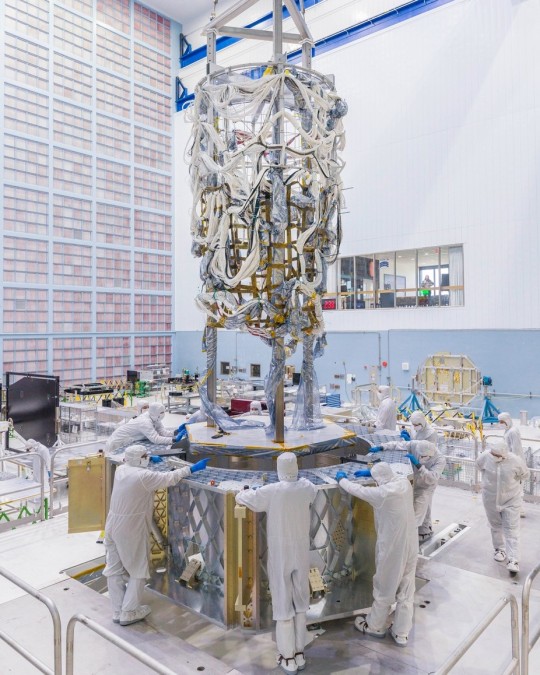
The Nancy Grace Roman Space Telescope’s flight harness is transferred from the mock-up structure to the spacecraft flight structure.
Your Body is Wired Like a NASA Space Telescope. Sort Of.
If our Nancy Grace Roman Space Telescope were alive, its nervous system would be the intricate wiring, or “harness,” that helps different parts of the observatory communicate with one another. Just like the human body sends information through nerves to function, Roman will send commands through this special harness to help achieve its mission: answering longstanding questions about dark energy, dark matter, and exoplanets, among other mind-bending cosmic queries.
Roman’s harness weighs around 1,000 pounds and is made of about 32,000 wires and 900 connectors. If those parts were laid out end-to-end, they would be 45 miles long from start to finish. Coincidentally, the human body’s nerves would span the same distance if lined up. That’s far enough to reach nearly three-fourths of the way to space, twice as far as a marathon, or eight times taller than Mount Everest!

An aerial view of the harness technicians working to secure Roman’s harness to the spacecraft flight structure.
Over a span of two years, 11 technicians spent time at the workbench and perched on ladders, cutting wire to length, carefully cleaning each component, and repeatedly connecting everything together.
Space is usually freezing cold, but spacecraft that are in direct sunlight can get incredibly hot. Roman’s harness went through the Space Environment Simulator – a massive thermal vacuum chamber – to expose the components to the temperatures they’ll experience in space. Technicians “baked” vapors out of the harness to make sure they won’t cause problems later in orbit.

Technicians work to secure Roman’s harness to the interior of the spacecraft flight structure. They are standing in the portion of the spacecraft bus where the propellant tanks will be mounted.
The next step is for engineers to weave the harness through the flight structure in Goddard’s big clean room, a space almost perfectly free of dust and other particles. This process will be ongoing until most of the spacecraft components are assembled. The Roman Space Telescope is set to launch by May 2027.
Learn more about the exciting science this mission will investigate on X and Facebook.
Make sure to follow us on Tumblr for your regular dose of space!
#NASA#astronomy#telescope#Roman Space Telescope#engineering#space hardware#dark energy#dark matter#space#technology#tech#universe
4K notes
·
View notes
Text
Whats the opposite of gothic? I'm in love with comp sci anti-gothic where it's just people being surprisingly polite and nice and funny through computers. A program's first lines are always "Hello world!". SMTP protocols apparently say "hello, pleased to meet you" to each other to establish a connection with a handshake. Python has a different version called Andaconda, which has a smaller version called miniconda. C++ is just C continuously improving on itself, because the ++ operator means to add one onto a previous value, and C# is two ++ stacked on top of each other. Lawmakers have to talk about the ethics of saving "cookies" to computers because one guy liked fortune cookies and decided to call them that. The internet itself wasn't created with security in mind because it was just meant to be a way for a group of people who trusted each other using it to send each other information, and so on, and so forth
#compeng#comp eng#computer engineering#computer science#Information Technology#studyblr#study#neon academia#university#eye contact with the abyss#It's probably just because I'm new to the whole field but it's really quite nice#I say anti gothic because instead of something normal being eerie#its something eerie (the inhumanity of computers) being surprisingly normal (people putting joke comments in code)
504 notes
·
View notes
Text
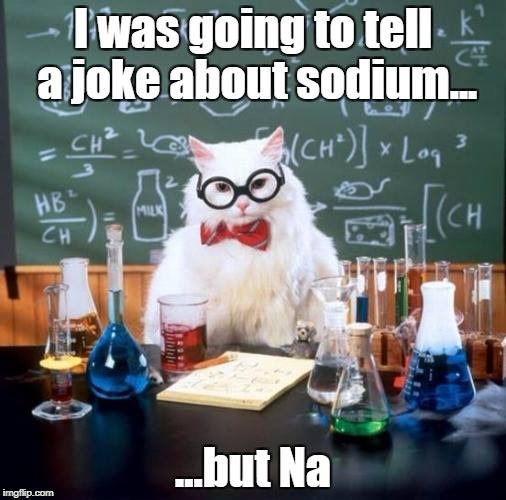
Na not today. 😺
#engineering#physics#maths#student#university#nerd#study#funny#science#funny meme#follow me#share#technology#meme#funny pictures#study abroad
432 notes
·
View notes
Text
stop arguing the existence of forklifts in the atla comics under my post you guys. there was an honest to god truck in Day Of Black Sun
#atla#frankly I think the biggest technology jump engine/ locomotive wise between#atla and tlok would have been the transition from vehicles being owned by private#companies and the state -> individual citizens due to automation and changes to#RC infrastructure rather than the invention of the technology itself but thats another post.#LIKE IM JUST SAYING. the idea that the tech timeline in the avatar universe looks different than ours#because imperialism and the subsequent enterprises it spawned completely monopolized#the motor industry for a while before personal vehicles became popular and affordable could#be fun... play with me in this space... <- guy who is always saying this
63 notes
·
View notes
Text
It’s just fascinating to me that head engineer’s intelligence ranges from “I used glass windows for our ship” to “I built a technology so advanced it almost destroyed the whole universe all by myself from scratch”
#markiplier#in space with markiplier#iswm head engineer#im sorry you cannot be dumb if you've built a whole ass technology that could destroy the entire universe#ALL BY YOURSELF TOO AND LITERALLY FROM SCRATCH#like yes he has made some questionable design choices for the ship#BUT ALSO#HE MADE THAT SHIP AND ITS SOME FUTURISTIC ADVANCED THING??#im sorry but he's really smart i will not argue
738 notes
·
View notes
Text
Parallel Orbits: Exploring the Resemblance Between Atomic and Planetary Structures
The similarity between the structure of an atom and the structure of a planetary system is a fascinating topic that reveals the harmony and regularity present in both the microscopic and macroscopic realms of the universe. Although they are vastly different in scale, these two systems share some fundamental principles of organization and motion.
First, let's consider the structure of an atom. An atom consists of a central nucleus that houses protons and neutrons and a cloud of electrons orbiting around it. Electrons revolve around the nucleus in discrete orbits, referred to as energy levels or electron shells. This organization is akin to how planets orbit the Sun in a planetary system.
In a planetary system, the Sun represents the nucleus, while planets like Earth, Mars, and Jupiter, among others, orbit around it. Just like electrons in an atom, planets in our solar system follow specific and regular paths, maintaining a constant distance from their central stars. Moreover, gravitational force plays a fundamental role on both scales, keeping objects in orbit.
Another notable similarity is the concept of quantization. In atoms, electrons can only exist in specific orbits, meaning they have quantized energy levels. In the solar system, the energy of planets is also quantized, with each planet occupying a specific orbit. This quantized nature is one of the reasons why these systems are so stable and predictable.
Furthermore, the stability of these systems is maintained by a delicate balance of opposing forces. In atoms, the electrostatic attraction between protons and electrons is counteracted by the orbital motion of electrons. In the planetary system, the gravitational force pulling planets toward the Sun is balanced by the orbital motion of these celestial bodies.
Although the scales are vastly different, the similarity in organization and underlying principles between the structure of an atom and the structure of a planetary system is a remarkable demonstration of the universality of physical laws. These analogies also serve as captivating examples of the beauty of science and how the same natural laws apply in different contexts throughout the universe.
#science#biology#physics#chemistry#technology#education#space#engineering#nature#research#facts#nasa#astronomy#art#scientist#universe#knowledge#stem#medicine#love#memes#health#sciencememes#math#covid#cosmos#sciencefacts#india#study
64 notes
·
View notes
Text

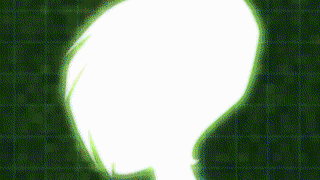




▷ Tech Magical Girls ◁

Cartoon Girls + Technology Powers
#magical girls#technology#tech#scientist#engineering#cartoon science#yurizaki mira#anime#winx#winx tecna#tinkerbell#shera#entrapta#peridot#steven universe#penny#rwby#green#winx techna#she ra
238 notes
·
View notes
Text
30 September 2022
Tomorrow I’m participating in the NASA SpaceApps Challenge with my brother. It’s a hackathon where you have two days to create something using NASA or associated space companies data.
We’re going to make a site that uses Mars data and music (that he’s going to compose). I’ll be programming the site using React, which I haven’t touched for ~2 years. Hopefully we’re able to make something cool.
Edit: if you’d like to participate, it’s a virtual hackathon open to everyone, here’s the link: https://www.spaceappschallenge.org
#hackathob#computer science#studyblr#comp sci#stem#university#women in tech#tech#technology#women in stem#college#programming#uni#software engineering#coding#studying#compsci#engineering#study#stemblr#information technology#nasa#space#astronomy#mars#geology
175 notes
·
View notes
Text
My group of college friends and I were talking and we came to the conclusion that everyone that is a stem major has some form of neurodivergence. Mostly adhd, with some other stuff sprinkled in. And now that we've talked about I refuse to believe anyone that is neurotypical would willing put themselves through the shit stem majors go through
#adhd#stem education#stem#women in stem#stem major#science#technology#engineering#mathematics#college#university#neurodiversity#its the neurodivergency#neurotypical
177 notes
·
View notes
Text

First of all, it’s super great you decided to start coding/programming in whatever language and area! Starting is the hardest part, so congrats to you! Now, you have your blog set up and you want to start making posts about your journey but have no ideas what the heck to talk about!
Old or new to Tumblr, you’re starting a coding/programming blog but unsure what to post about? I got you! I'll even give you an idea of how you could format your posts after you have an idea of WHAT to post about, next is HOW to post it! Here are some ideas to get you started!
●・○・●・○・●
8 Blog Coding/Programming Post Ideas 💡
Daily summary of what programming language you studied and what you learned
Project progress posts
Found a resource you want to share here? Post about it! It can be a YouTube video or a cool website you have been to!
Start a challenge and post about it! E.g. TwoWeeksChallenge, 100DaysOfCode, 3Days1Project, JaveScriptWeek etc
Talk about short-term and long-term goals in coding/programming and update your blog once in a while on how you’re working towards those goals
Talk about any major accomplishments you made during your journey e.g. started a bootcamp, got into a new internship, got your first tech job!
Any study tips you want to share
Explaining a programming concept/topic
Tips on formatting your posts 🙌🏾
There are loads of ways to format your posts! I get my inspiration from #studyblr posts, here are some examples! :

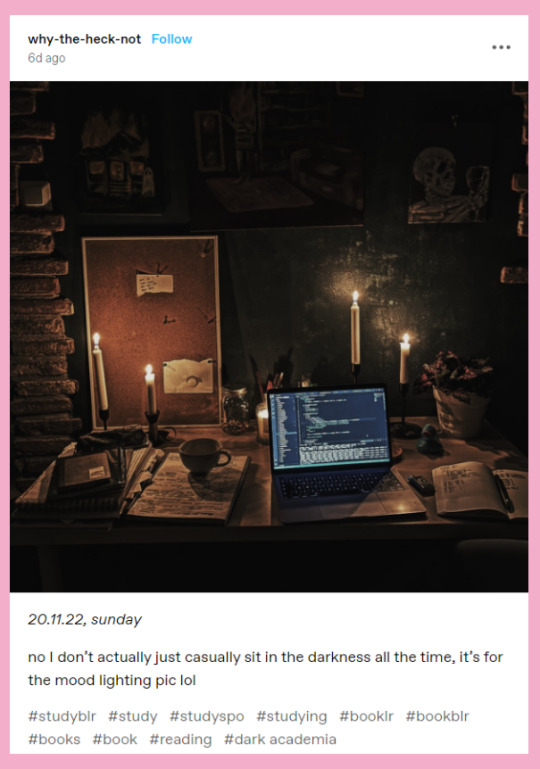


You can add hashtags, if you want, relating to the topics/languages/theme you want to be a part of! E.g. #studying, #programming, #coding, #python, #studyblr etc
Add images of your code, your study area, or of your surroundings. You can add dates to keep track of your daily/weekly/monthly progress! And more! I do recommend finding cool blogs to get inspo from and creating your own way of making your posts!
I wish you good luck with your studies and be proud of yourself for starting in the first place and continuing on~!
Thank you and have a nice day/night! 🙌🏾💗
#my resources#resources#study tips#programming#coding#study blog#blogging#november 2022#2022#computer science#studyblr#study#university#student#developer#programmer#software engineering#webdev#technology#html#new blog#coder#computer engineering#mathblr#study motivation#study aesthetic#studyspo#computer science major#computer science student#stem
74 notes
·
View notes
Text
hm. a Mercury LAM. possibly also a Mercury II LAM.
#battletech#mercury’s a good ‘mech and it looks cool as well#seems easy enough to make it aerodynamic and put a big jet engine on it#LAMs seem to be a weird out-of-universe technological dead end for some reason
10 notes
·
View notes
Video
Proba-3's laser-precise positioning by European Space Agency
Via Flickr:
An infrared view of a laser-based test campaign – taking place at Redwire Space in Kruibeke, Belgium – which represents crucial preparation for ESA’s precision formation flying mission, Proba-3. Later this year, two satellites will be launched together into orbit to maintain formation relative to each other down to a few millimetres, creating an artificial solar eclipse in space. Proba-3’s ‘Occulter’ spacecraft will cast a shadow onto the other ‘Coronagraph’ spacecraft to block out the fiery face of the Sun and make the ghostly solar corona available for sustained observation for up to six hours per 19.5 hour orbit. However to maintain the position of a shadow just a few centimetres across on the Coronagraph satellite from the Occulter satellite around 150 m away, the two satellites rely on a suite of sensors, including intersatellite radio links, GNSS, visual imaging and – for the most precise positioning at closest range – a laser metrology (or ‘measurement of measurement’) system. This system will shoot a laser from the Occulter spacecraft toward a corner cube retroreflector placed on the face of the Coronagraph spacecraft for tracking of relative position and attitude (pointing direction), achieving millimetre precision. “To calibrate Proba-3’s laser metrology system, its performance was tested within the 60-m long Redwire cleanroom,” explains Damien Galano, Proba-3’s mission manager. “The Coronagraph’s laser was reflected off a retroreflector and the resulting positioning measurements checked against absolute ‘ground truth’ using a separate laser tracking system.” This mission is being put together for ESA by a consortium led by Spain’s Sener, with participation by more than 29 companies from 14 countries. The Proba-3 platforms have been designed by Airbus Defence and Space in Spain and satellite integration by Redwire in Belgium. GMV in Spain is responsible for Proba-3’s formation flying subsystem while its main coronagraph instrument comes from Belgium’s Centre Spatial de Liège, CSL. Proba-3 is due to be launched by PSLV-XL launcher from India in September. Credits: ESA - M. Pédoussaut
#ESA#European Space Agency#Space#Universe#Cosmos#Space Science#Science#Space Technology#Tech#Technology#In The Clean Room#Laser#Testing#Test#Engineering#Engineer#Engineers#flickr
3 notes
·
View notes
Text
does anyone else ever think about the fact that the grishaverse has tanks and submarines but no cars because i sure do
#i am desperately curious how the industrial revolution went down in this universe#like. who in fjerda figured out how engines worked? did they just immediately start using it for military purposes?#they also have one (1) train in the tv show since the conductor seems to have the only one#anyway. i like to spend too much time thinking about the development of technology in fantasy worlds#grishaverse#shadow and bone#six of crows#leigh bardugo#pie says stuff
10 notes
·
View notes
Text



Today’s Doodle celebrates Google’s 25th year.
And while here at Google we’re oriented towards the future, birthdays can also be a time to reflect.
Let’s take a walk down memory lane to learn how we were born 25 years ago...
By fate or luck, doctoral students Sergey Brin and Larry Page met in Stanford University’s computer science program in the late ‘90s.
They quickly learned they shared a similar vision: make the World Wide Web a more accessible place.
The pair worked tirelessly from their dorm rooms to develop a prototype for a better search engine.
As they made meaningful progress on the project, they moved the operation to Google’s first office — a rented garage.
On 27 September 1998, Google Inc. was officially born.
Much has changed since 1998 — including our logo as seen in today’s Doodle — but the mission has remained the same: to organize the world’s information and make it universally accessible and useful.
Billions of people from all over the globe use Google to search, connect, work, play, and SO much more!
Thank you for evolving with us over the past 25 years. We can’t wait to see where the future takes us, together.
#Google#Google Doodle#Sergey Brin#Larry Page#Stanford University#World Wide Web#search engine#computer science#Google Inc.#information#knowledge#accessibility#90s#20th century#Google @ 25#birthday#1998#connection#technology#tech world
2 notes
·
View notes
Text

Iron casting workshop of the University of Technology and Engineering in Lille, French Flanders region of France
French vintage postcard
#university#carte postale#ephemera#photo#historic#postcard#tarjeta#postal#france#casting#briefkaart#french#ansichtskarte#photography#vintage#postkaart#postkarte#the university of technology and engineering#lille#old#engineering#sepia#technology#iron#workshop
6 notes
·
View notes
Text
Unlock Your Academic Potential: Pursue a PhD at SAGE University Bhopal
SAGE University, Bhopal is happy to share that we are going to conduct entrance exam for our upcoming PhD Batch 07 ( Spring 2023-24). Important dates and details of the entrance exam is given below. Apply Now!
More details visit website: https://sageuniversity.edu.in/
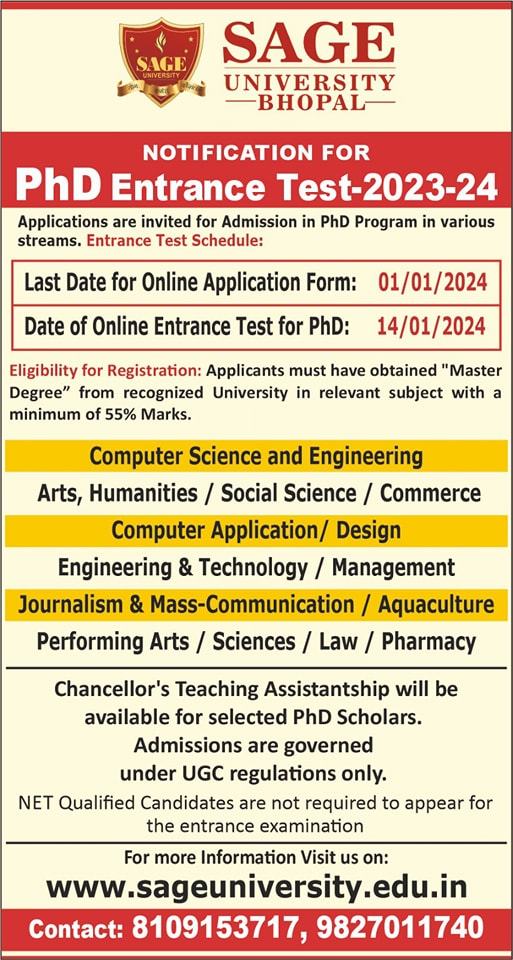
#PhD#PhD entrance exam#online entrance test for phd#SAGE University Bhopal#best university in bhopal#computer science and engineering#computer application#design#engineering & technology#performing arts#management#sciences#law#pharmacy#aquaculture#social science#journalism & mass communication#commerce
1 note
·
View note
